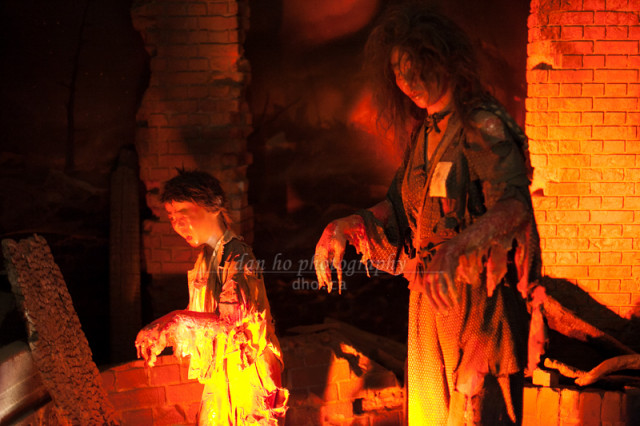
- Hiroshima Atomic Bomb survivors share their stories.

- Hiroshima Prefectural Commercial Exhibition Hall is the only structure left standing when the Atomic Bomb exploded over Hiroshima in August 6, 1945. The bomb detonated 600m above and 160m South East of the building. The detonation almost directly above the building helped to prevent total collapse of its structure.

- Hiroshima Prefectural Commercial Exhibition Hall is the only structure left standing when the Atomic Bomb exploded over Hiroshima in August 6, 1945. The bomb detonated 600m above and 160m South East of the building. The detonation almost directly above the building helped to prevent total collapse of its structure.

- Hiroshima Prefectural Commercial Exhibition Hall is the only structure left standing when the Atomic Bomb exploded over Hiroshima in August 6, 1945. The bomb detonated 600m above and 160m South East of the building. The detonation almost directly above the building helped to prevent total collapse of its structure.

- Hiroshima Atomic Bomb survivors share their stories.

- 8:15. The time the morning of August 6, 1945 when the Atomic Bomb detonated over Hiroshima. The watch stopped functioning at precisely that moment.

- A very old survivor the Atomic Bomb blast on the grounds of the Hiroshima Castle. Now on crutches and bandaged round its core, this willow tree still lives.

- Model figures depicting the scene the day the Atomic Bomb fell over Hiroshima. The flesh is melting off the victims' bones.

- Advise against the unannounced use of the Atomic Bomb by James Franck who chaired the Franck Report. The study examined the social fallout from the use of the bomb.

- Reconstructed Hiroshima Castle grounds. The original castle was obliterated by the Atomic Bomb.

- Aioi Bridge in Hiroshima was the intended target of the Atomic Bomb blast on August 6, 1945. Instead, the bomb detonated 600m over Shima Hospital a little to the south east.

- The Peace Clock at the Hiroshima Peace Memorial.

- The Children's Peace Memorial was built in memory of Sadako, a 12 year old victim of Leukemia due to radiation exposure from the Atomic Bomb when she was three. She folded over 1000 cranes, an act which legends said would grant any wish. She wished to live.

- Paper cranes form the basis for the art work around the Children's Peace Memorial, inspired by the life and death of Sadako, an atomic bomb survivor, only to die nine years later, at 12-years-old, from leukemia.

- The Children's Peace Memorial was built in memory of Sadako, a 12 year old victim of Leukemia due to radiation exposure from the Atomic Bomb when she was three. She folded over 1000 cranes, an act which legends said would grant any wish. She wished to live.

- The Children's Peace Memorial was built in memory of Sadako, a 12 year old victim of Leukemia due to radiation exposure from the Atomic Bomb when she was three. She folded over 1000 cranes, an act which legends said would grant any wish. She wished to live.

- The Children's Peace Memorial was built in memory of Sadako, a 12 year old victim of Leukemia due to radiation exposure from the Atomic Bomb when she was three. She folded over 1000 cranes, an act which legends said would grant any wish. She wished to live.
